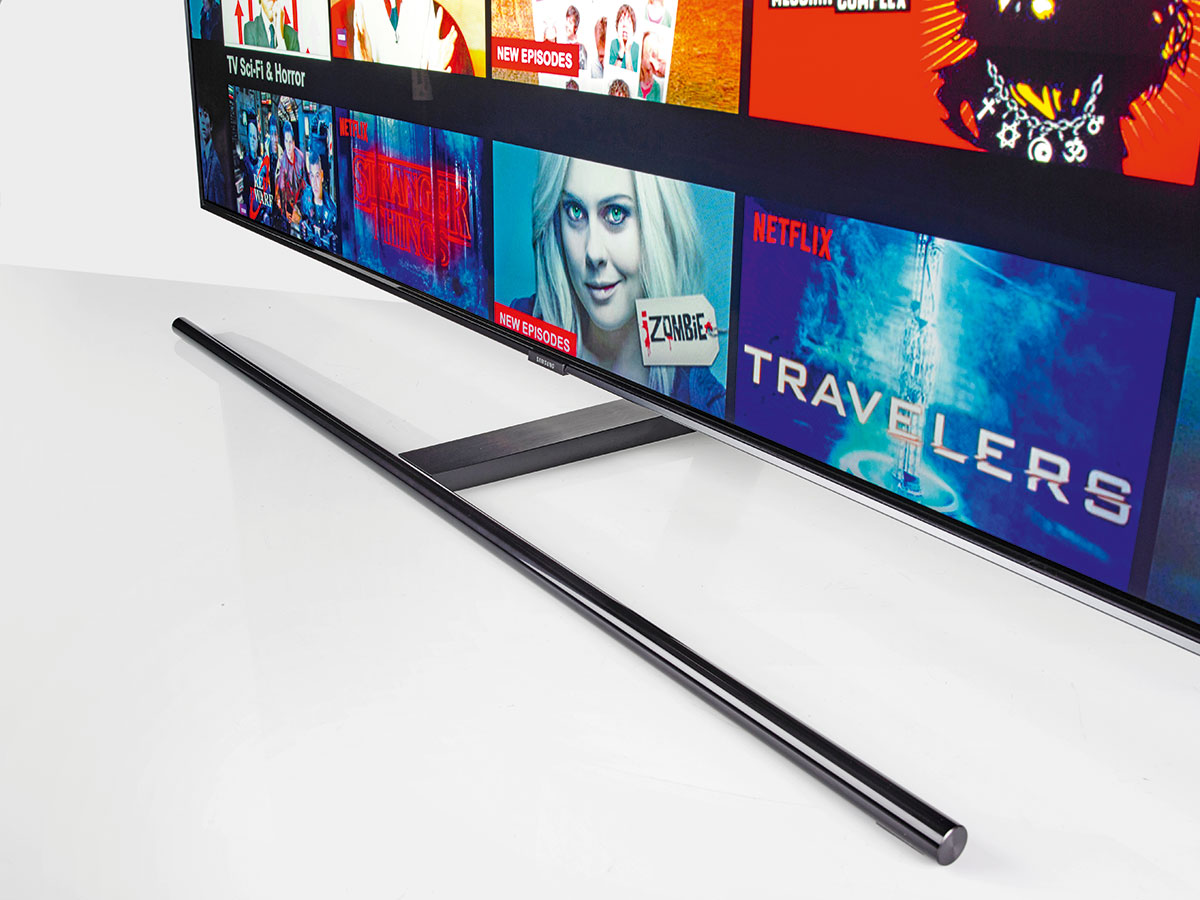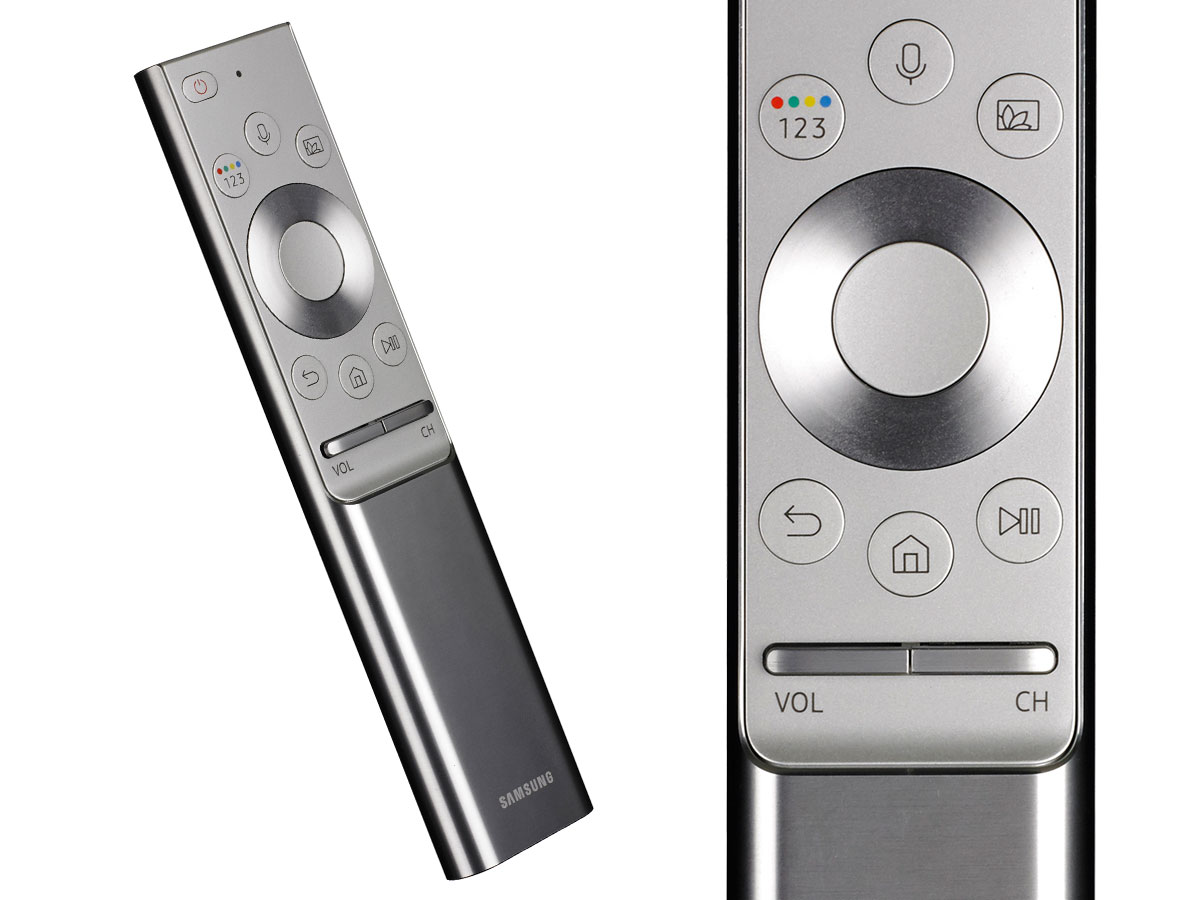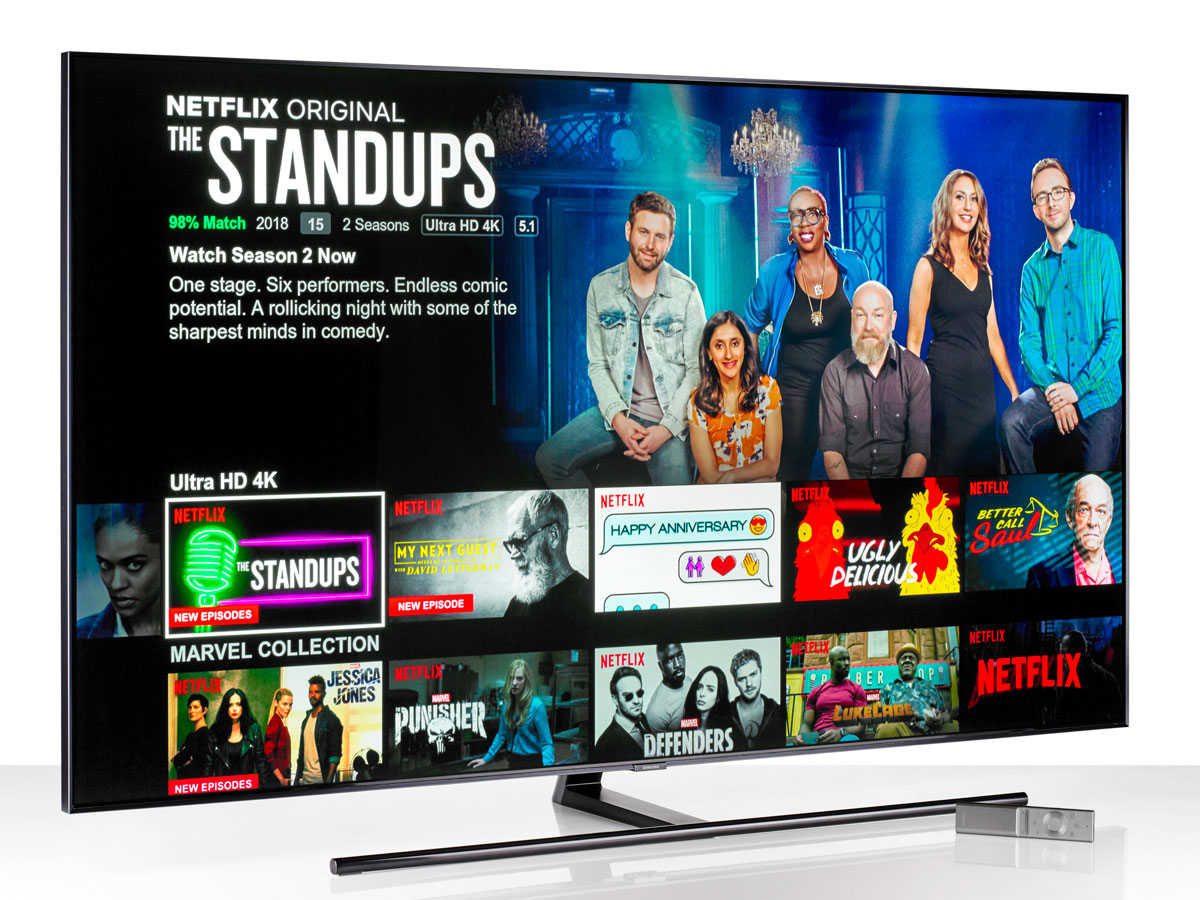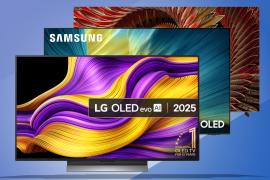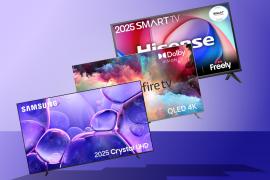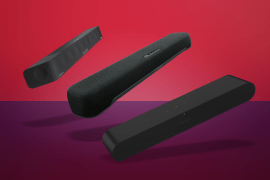Samsung QE65Q9FN review
QLED comes of age - and OLED had better watch out
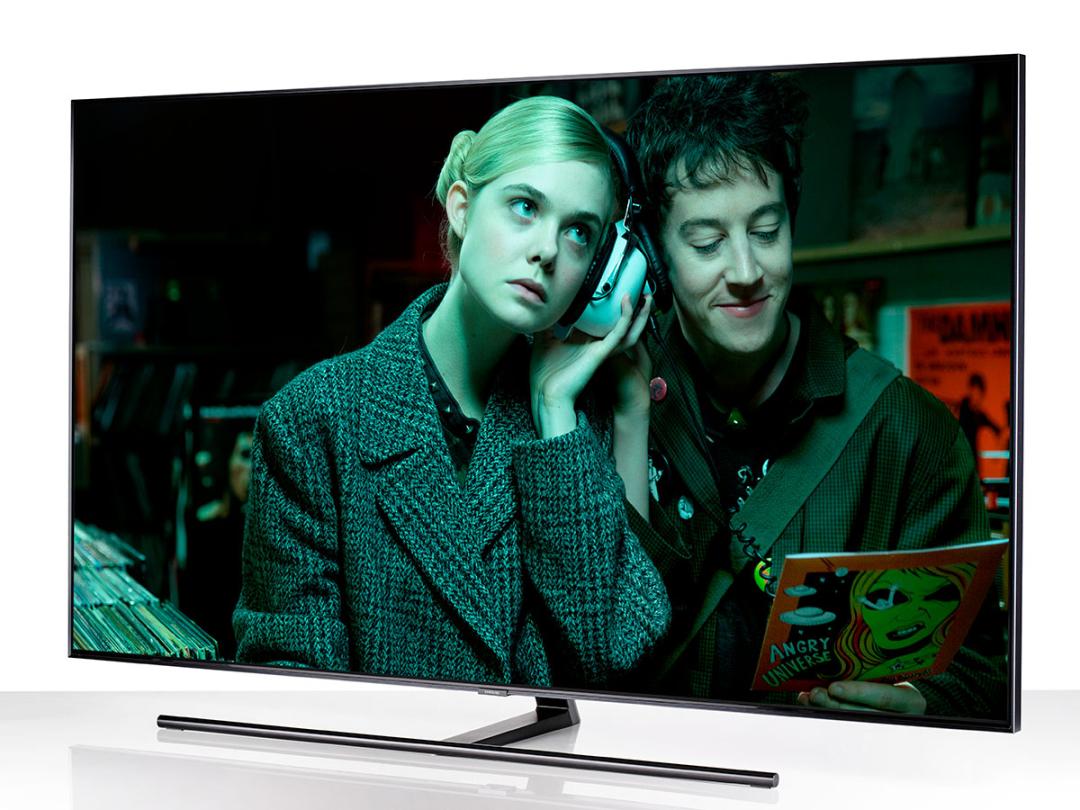
There’s no denying that last year’s QLEDs were good, but there’s also no denying that last year’s OLEDs were better. They generally worked out cheaper, too.
2017 was not a stellar year for Samsung, then, but rather than join the ever-expanding OLED army, the Korean giant is sticking to its guns. It maintains that when it starts producing self-emissive quantum dots, QLED will smash OLED.
But self-emissive quantum dots are still a long way off, and the edge LED backlights of last year’s QLEDs definitely held the TVs back a bit.
The short-term solution? A direct LED backlight that allows the set to go astonishingly bright without sacrificing black depth in other parts of the image, and that is so well controlled it’s almost as if the quantum dots are self-emissive.
That backlight is only available on the top model in Samsung’s QLED range, the Q9FN (not to be confused with the N-less Q9F, which is the 2017 version), the 65in version of which we’re testing here. And yet this flagship QLED comes in significantly cheaper than the equivalent LG OLED, the £4500 OLED65C8.
We’ve not yet tested that new LG, but it’s really going to have to go some to surpass this scintillating Samsung.
Picture: none brighter, none more colourful
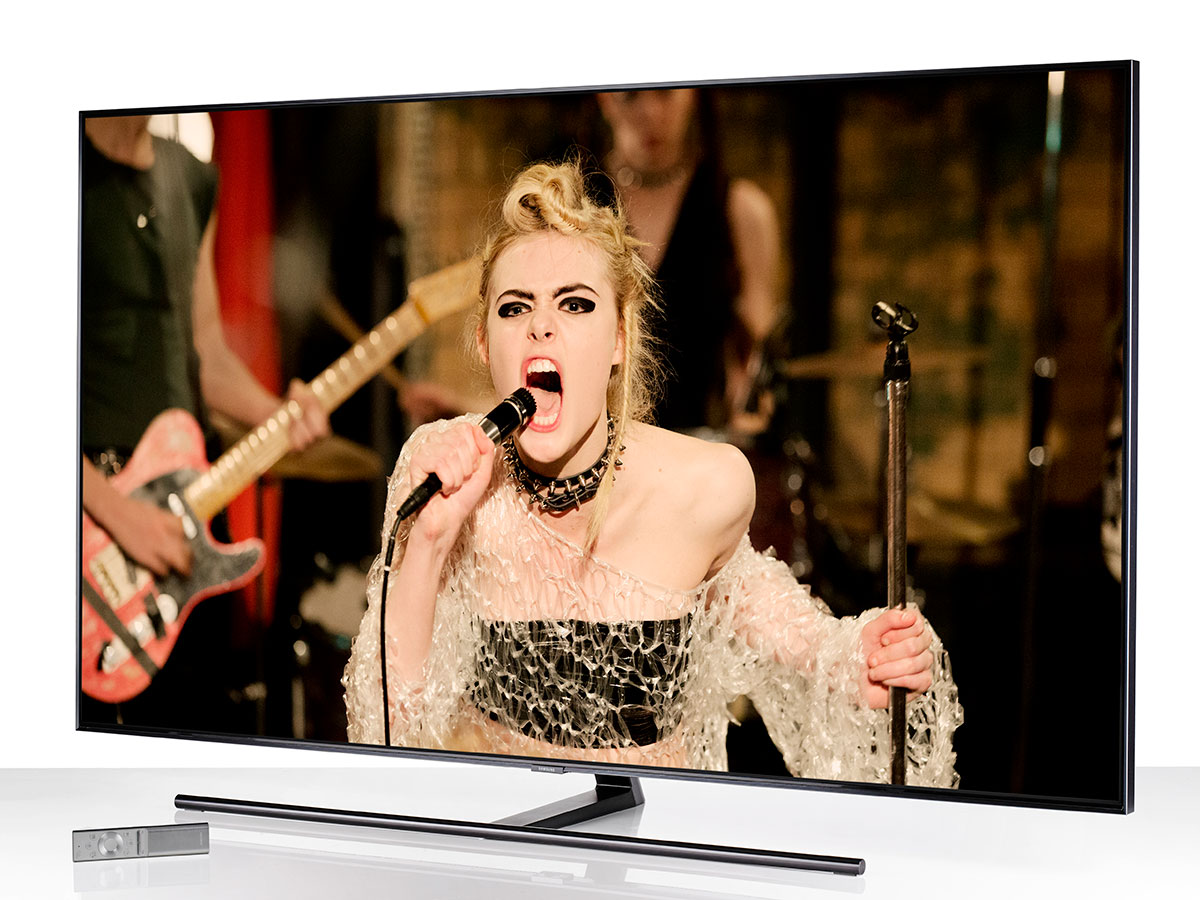
It might seem odd to get all over-excited about a backlight, particularly as direct (also known as full array) backlights aren’t exactly a new thing, but it has a genuinely transformative effect on performance here.
It’s all to do with the combination of brightness (2000 nits) and zonal control on offer, which means that if you’ve got a bright element in the middle of an otherwise black screen – Ryan Gosling under a spotlight in the concert scene of La La Land, for example – the spotlight is astonishingly bright and brilliantly white while the rest of the screen is inky black almost to the degree of an OLED telly.
What’s more, the backlight produces practically no bleeding or blooming around the object being lit. It’s a pure, sharp, beacon in the darkness, and it looks incredible.
The backlight also combines with those super-vibrant-but-accurate quantum dots to deliver perhaps the most colourful picture we’ve yet seen. It’s not simply that colours are more vivid, although they are, it’s that more colours are revealed, particularly at the brightest end of the spectrum.
Put on Guardians of the Galaxy Vol. 2 and skip to the chapter that sees Gamora sitting in the open landscape of Ego’s planet, and you’ll be dazzled by not just the vibrancy of the colours that pop from the screen, but also in the extra subtlety of the gradations and the lighter shades that are washed-out or missed entirely by other TVs.
While we’re on the subject of more, how do you like the sound of more detail? Thought so, and that’s what the Samsung gives you, particularly in the brightest and darkest parts of the picture. That makes clouds, for example, more defined and distinct, resulting in skies that are more dramatic, and the amount of detail the TV digs up from darkness makes dimly-lit films such as Chris Nolan’s Batman trilogy more revealing than ever.
The backlight is probably also responsible for the significantly improved viewing angles over last year’s QLEDs, which were really rather poor in that regard. Here there’s still a little drop off in vibrancy as you move off-axis, but by and large everyone in the room will get a great picture.
An OLED will still offer even better viewing angles, though. It will also offer even deeper blacks, which lends a certain deep lusciousness to the picture as a whole, albeit at the expense of dark detail. Opt for the Sony A1 OLED, and you’ll get even better motion than this Samsung can offer, too, although the Q9FN is an admirable handler of motion in its own right and a significant step-up in this regard over last year’s QLEDs.
A word on picture settings…
There’s variation in every TV and you should always calibrate to your taste, but if you’re after some basic tips and the settings we preferred during testing, here you are.
First things first, head straight to the Eco settings and turn them all off – they’re a serious drain on performance. Next, motion processing. As is the case with most TVs, the Auto mode is far too aggressive and unnatural but, surprisingly, the default settings in the Custom mode work really rather well. The resultant motion handling isn’t quite up there with what Sony can do, but it’s not far off, which is a fairly long stride in the right direction.
Still, some may prefer to turn the Motion Plus settings off entirely. That’s all you need to do to get HDR stuff looking its best, but for standard dynamic range (SDR) content you’re going to need to tweak a bit further. For us, dropping the Contrast setting by about ten points, Sharpness by around 5, taking a point off Brightness and upping the Local Dimming to High results in the best balance of punch and black depth.
Some may find that level of Local Dimming a bit much with SDR, though, in which case drop that back down to Medium and return Brightness to its default setting.
Gaming: the best ever TV for gaming?
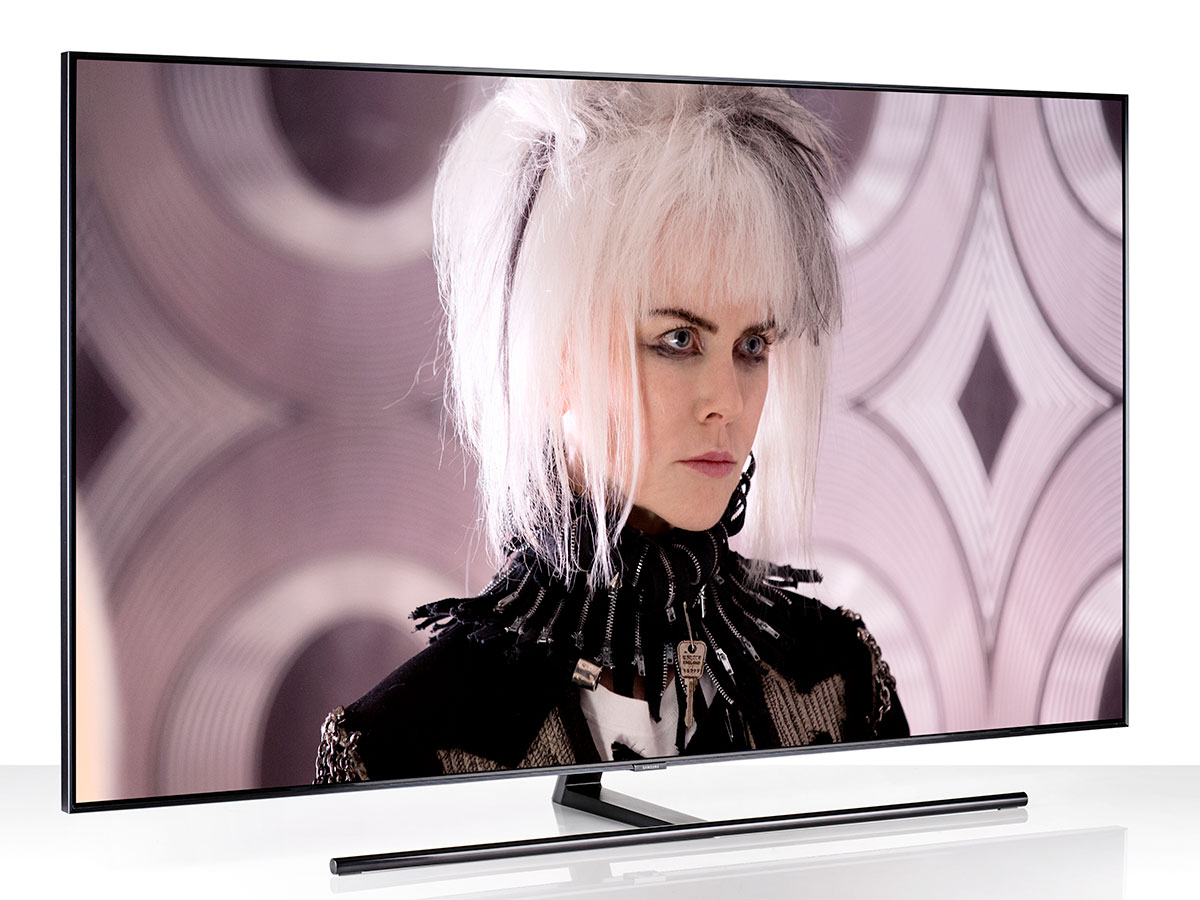
Samsung has long been a favourite for gamers, generally offering the lowest input lag of any manufacturer.
The 15.5ms we measured on the Q9FN is a new low (which is a good thing), but Samsung has gone much further this year than simply reducing lag. Hop into the Game Mode menu and you’ll find features for smoothing motion, which works and only increases input lag to the 29ms mark, and for variable refresh rate (VRR), which allows the TV to match the frame rate of a game in real-time and therefore reduce screen tearing.
VRR has previously only been available on fairly high-end gaming monitors and only PCs are currently able to take advantage, but the Xbox One X and One S should be boarding the VRR train when FreeSync is added as part of the spring update.
Even without those fancy features the Q9FN would be a superb TV for gaming thanks to its extraordinary contrast and vibrancy. It’s the perfect foil for HDR blockbusters such as Horizon Zero Dawn, God of War and Far Cry 5.
Sound: certainly not an afterthought
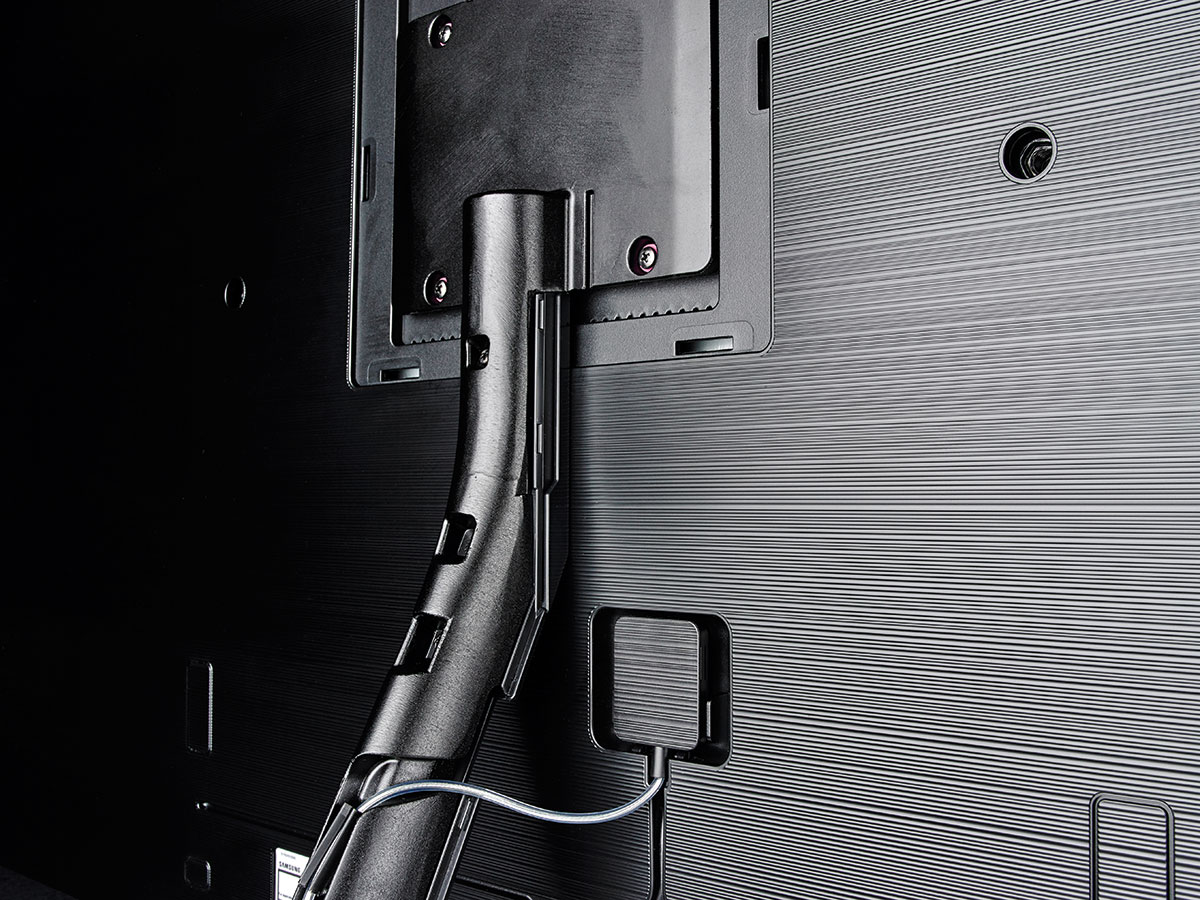
While Samsung’s clearly focused the bulk of its attention on the Q9FN’s picture quality, sound certainly hasn’t been entirely overlooked. Of the three sound modes on offer, it’s ‘Optimised’ that’s the most impressive, producing big, bold and spacious audio that does a surprisingly impressive job with action movies and games. It’s not all drama and no detail, though, and voices are still clear and distinct within the gunfire and explosions going on around them.
While ‘Optimised’ is certainly the preferred mode for serious content, some might find the smoother, less weighty delivery of the Standard mode when watching normal telly. And although the Samsung’s sound is very good by flatscreen standards, the Sony A1 still sounds better and both can be beaten by a decent soundbar.
You should budget for one of those at least – think Dali Kubik One or even the Sony HT-ST5000 if you can stretch to it – but pictures these good deserve being partnered with a full surround system if you’ve got the money and space.
Design and features: OneConnect to rule them all
Samsung has long been pushing its OneConnect concept, which sees the TV’s inputs and other gubbins moved to an external box that can be stowed away out of site.
This year’s OneConnect box is about twice the size of last year’s, which probably sound like a big ol’ backwards step – but this is bulk with benefits. That’s because this year the OneConnect box is also able to send power to the screen.
That’s right; you don’t need to connect the telly itself to the wall. Instead, just one, remarkably thin 5m cable connects the screen to the OneConnect box, which can itself be hidden well out of site. It makes for an extremely neat design, particularly if you’re wall-mounting.
Wall-mounters will also want to check out the Ambient mode, which Samsung is clearly very proud of. It’s certainly clever; if you take a picture of the TV in position it will mimic the wall behind and around it, chameleon-like, even blending into patterned wallpaper.
Alternatively, there are a number of arty pictures and live wallpapers to choose from, or you can upload your own pictures, and each can be accompanied by a clock, your calendar or even a newsfeed, making the TV prettier and more useful than it would otherwise be while on standby. We’re honestly not sure that a blank, black screen is as aesthetically offensive to as many people as Samsung would have you believe, but it’s an interesting, innovative feature for sure, and according to the company would only add 68p to your energy bill if used for three hours a day.
It’s also interesting to see Samsung integrate its new QLED TVs with its SmartThings ecosystem, which means the Q9FN can see what’s in your fridge or turn your Hue lights on or off. The problem is that the integration of television and smart home devices is more stripped-back on the TV than it is on your phone, and interrupts what you’re watching.
Seeing as you’ve probably got your phone to hand it makes much more sense to use that instead. When it comes to the more traditional TV-based apps, Samsung’s 2018 QLEDs have you just as substantially covered as their predecessors did.
You get Netflix and Amazon in full 4K HDR form, of course, Now TV for contract-free Sky content, plus Google Play Movies & TV, Rakuten, and Samsung’s own (but Rakuten-powered) TVPlus app for on-demand streaming of blockbuster films. The latter was very undercooked when it launched last year but is starting to seem more worthwhile thanks to an expansion of its 4K movie library.
Blade Runner 2049 was available for rent and purchase at the time of writing, for example. Apps for all of the UK’s catch-up services are present, too, although BBC iPlayer wouldn’t work during our test. We’re assured that this is a simple licensing issue and that iPlayer will be working as expected by the time the TV makes it to customers’ homes. HLG (Hybrid Log Gamma) is supported so, should the BBC release any more HDR streams or even live broadcasts, you’ll be ready for them, and HDR10 is of course on board.
Dolby Vision is not, which is no surprise given Samsung’s dedication to its own, rival format, HDR10+. At this point the only way to enjoy HDR10+ is via a handful of Amazon Prime Video shows, and discs are still a long way off, so it’s not worth getting too excited about just yet.
Samsung QE65Q9FN verdict
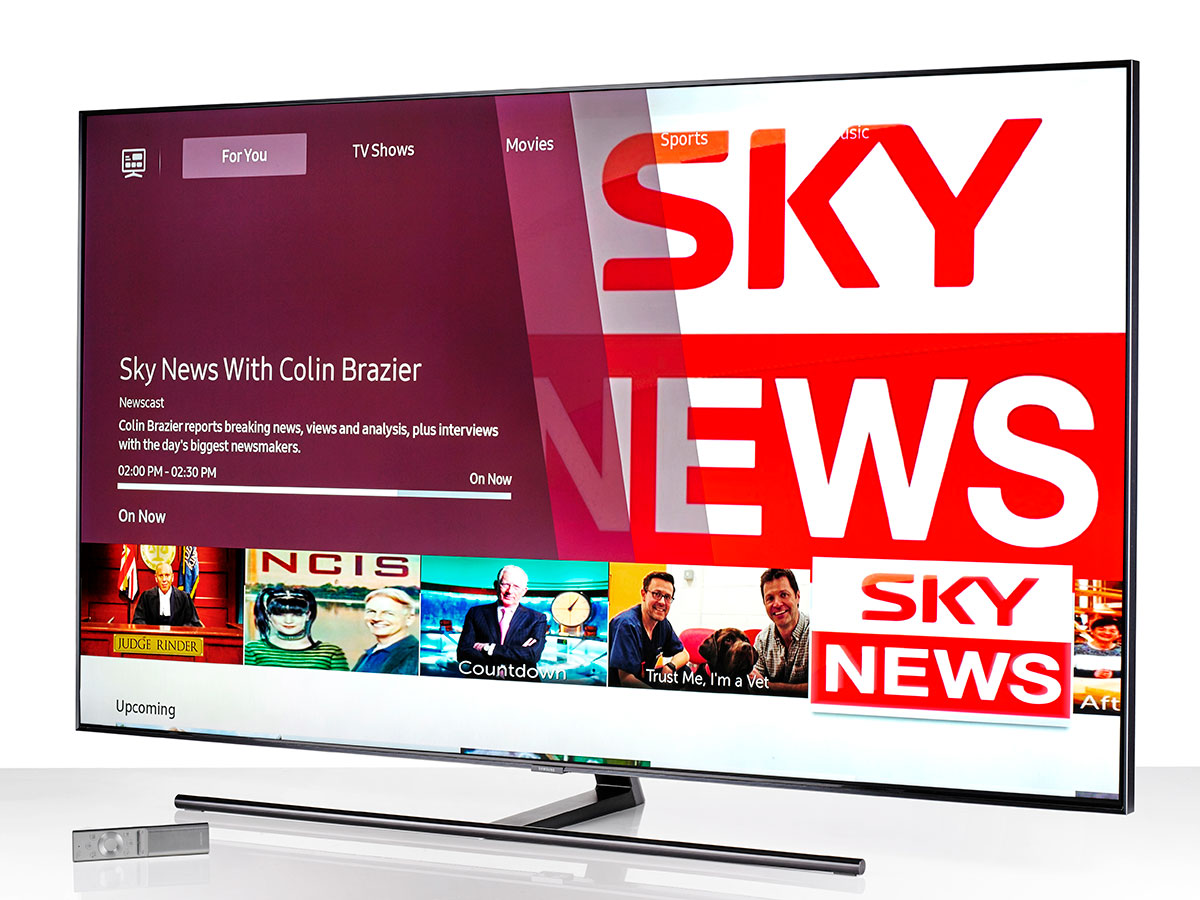
But, by golly, there are so many reasons that you should get excited about the Samsung Q9FN.
That direct, full array backlight is a revelation that, combined with Samsung’s quantum dot tech, results in the brightest, punchiest, most vibrant TV we’ve yet reviewed, with expertly controlled, zonal contrast that means the brightest elements don’t reduce the quality of the blacks.
An OLED will still go blacker but, on the evidence of 2017 examples such as the Sony A1, it won’t dig up nearly as much dark detail or go nearly as bright.
What’s more, no TV we’ve yet seen can beat the Q9FN for usability, breadth and depth of apps, or gaming features.
We’re still in the early days of 2018 TVs and we’re yet to test one of LG’s new OLEDs, but a TV better and more complete than this is currently quite hard to imagine.
Stuff Says…
It’s shots fired in the 2018 leg of the QLED vs OLED campaign, and the QE65Q9F has drawn blood
Good Stuff
Astonishingly punchy, bright and vibrant
Deep, detailed blacks
Loads of apps
Great for gaming
Genius evolution of OneConnect
Bad Stuff
Sony does motion even better
OLEDs offer even deeper blacks and even better viewing angles
